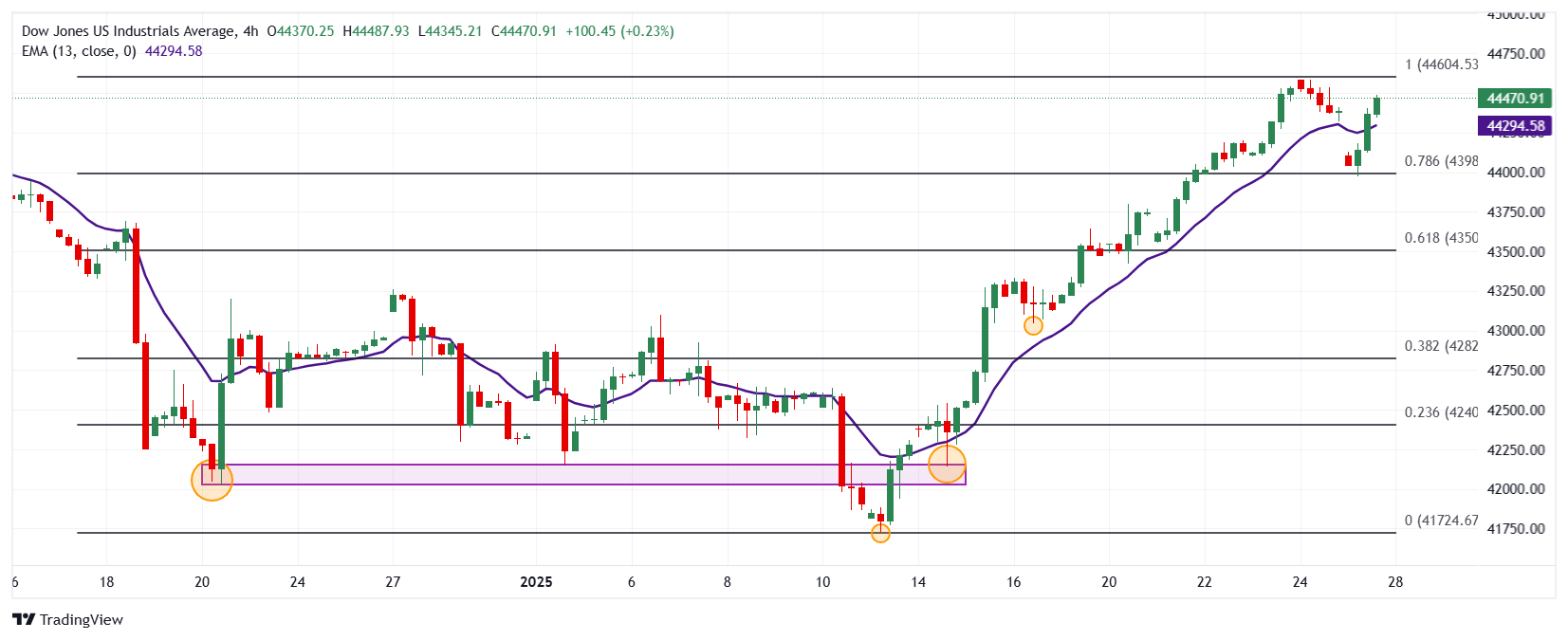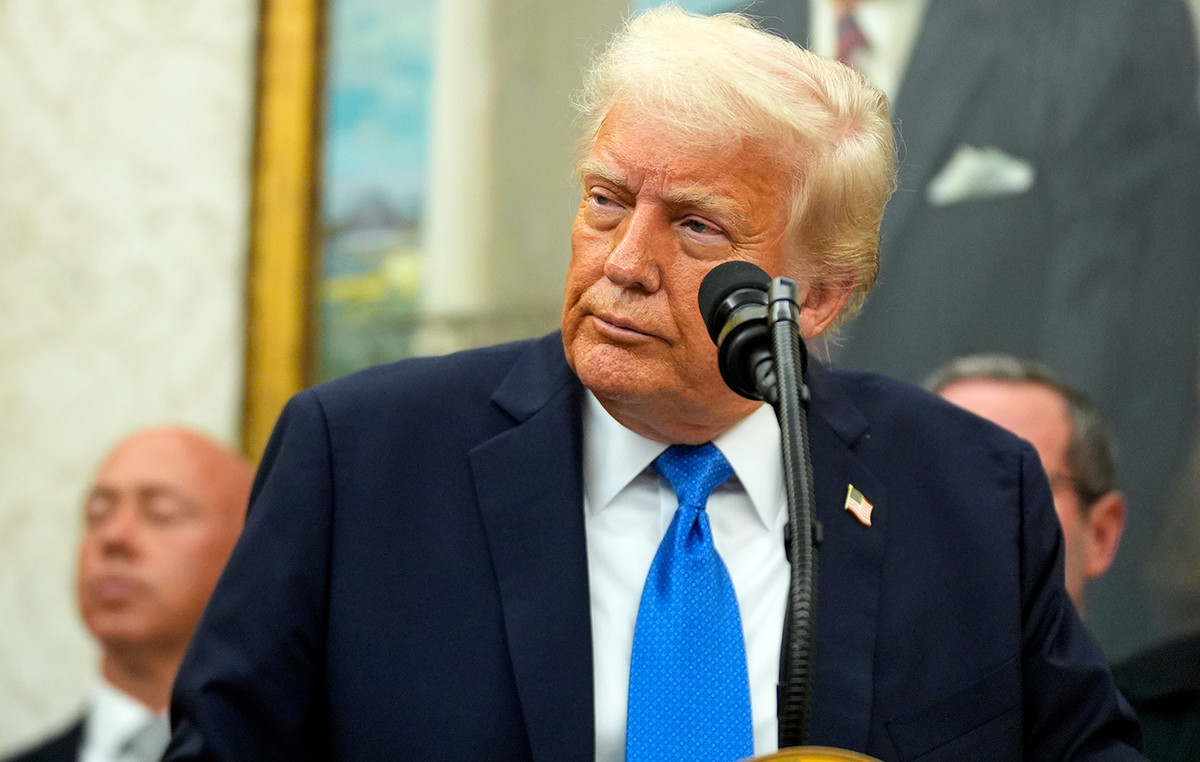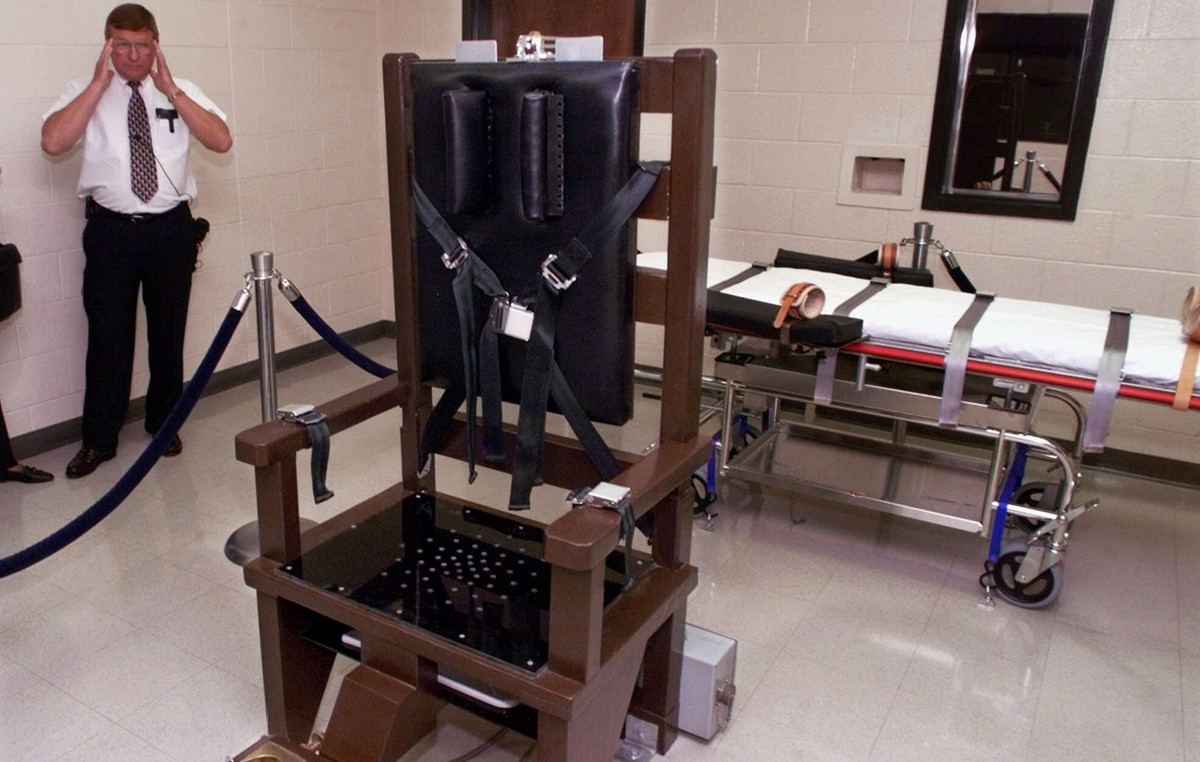- The Dow Jones rises 0.21% on the day.
- The Nasdaq 100 loses 3.41% daily, dragged down by Constellation Energy (CEG) and Broadcom (AVGO).
- The S&P 500 falls 1.93% today, weighed down by Vistra Corp (VST) and Arista Networks (ANET).
The Dow Jones rebounds from Jan. 21 lows of 43,971, finding buyers who pushed the index to a day’s high of 44,423.
The Dow Jones Industrial Average began trading at 44,103, while the Nasdaq 100 technology index began trading at 21,402. The S&P 500 opened at 6,014, sliding strongly in line with the major stock indexes.
Salesforce and Johnson & Johnson keep the Dow Jones in positive territory
The Dow Jones index is currently trading at 44.469, up 0.21% today, consolidating within Friday’s operating range.
Salesforce (CRM) shares soared 4.55% today, reaching highs not seen since December 18, 2024 at $353.15. Along the same lines, Johnson & Johnson (JNJ) shares are on the rise for the third consecutive day, gaining 3.62% daily, reaching the highs of December 3, 2024 at $152.15.
Nasdaq 100 falls to two-week lows dragged down by Constellation Energy and Broadcom
The Nasdaq 100 technology index loses 3.41% on the day, trading at the time of writing at 21,039, visiting lows not seen since January 14.
The shares of Constellation Energy (CEG) plummeted 19.46% on Monday, reaching lows not seen since January 10 at $273.50 along with the values of Broadcom (AVGO) which presented a fall of 18.52%, reaching lows of January 13 at $198.51. Companies involved in the development of artificial intelligence are being affected by the introduction of DeepSeek R1, a Chinese, open source, high-performance AI model created with fewer resources than its North American counterparts.
The S&P 500 slides strongly after the emergence of DeepSeek R1
The S&P 500 index lost 1.93% today, signing its second consecutive session down and reaching lows not seen since January 15 at 5,916.
Vistra Corp. (VST) records a drop in its share price of 28.31%, falling to the lows of December 30 at $135.15. Investors are questioning the energy needs involved in the development of artificial intelligence in the US after the introduction of DeepSeek R1, a Chinese open source AI model capable of competing with the most recent OpenAI models using fewer energy resources .
Following the same trend, Arista Networks (ANET) plummets 22.56%, reaching lows not seen since November 27 at $99.10.
Technical analysis of the Dow Jones
The Dow Jones established short-term support given by the January 16 low at 43,048. The next key support is at 41,731, the January 13 pivot point. The closest resistance is seen at 44,584, the maximum of January 24.
Dow Jones 4-hour chart

Dow Jones FAQs
The Dow Jones Industrial Average, one of the world’s oldest stock indices, is made up of the 30 most traded securities in the United States. The index is weighted by price rather than capitalization. It is calculated by adding the prices of the securities that comprise it and dividing them by a factor, currently 0.152. The index was founded by Charles Dow, also founder of the Wall Street Journal. In recent years it has been criticized for not being sufficiently representative, since it only follows 30 companies, unlike broader indices such as the S& P 500.
There are many factors that drive the Dow Jones Industrial Average (DJIA). The main one is the aggregate performance of its component companies, revealed in quarterly corporate earnings reports. US and global macroeconomic data also contribute, influencing investor sentiment. The level of interest rates, set by the Federal Reserve (Fed), also influences the DJIA, as it affects the cost of credit, on which many companies largely depend. Therefore, inflation can be a determining factor, as well as other parameters that influence the decisions of the Federal Reserve.
The Dow Theory is a method for identifying the main trend of the stock market developed by Charles Dow. A key step is to compare the direction of the Dow Jones Industrial Average (DJIA) and the Dow Jones Transportation Average (DJTA) and only follow trends where both are moving in the same direction. Volume is a confirmation criterion. The theory uses elements of maximum and minimum analysis. The Dow theory proposes three phases of the trend: accumulation, when the smart money begins to buy or sell; public participation, when the general public joins the trend; and distribution, when the smart money abandons the trend.
There are several ways to trade the DJIA. One of them is to use ETFs that allow investors to trade the DJIA as a single security, instead of having to buy shares of the 30 companies that comprise it. A prominent example is the SPDR Dow Jones Industrial Average ETF (DIA). Futures contracts on the DJIA allow traders to speculate on the future value of the index, and options provide the right, but not the obligation, to buy or sell the index at a predetermined price in the future. Mutual funds allow investors to purchase a portion of a diversified portfolio of DJIA securities, providing exposure to the global index.
Source: Fx Street
I am Joshua Winder, a senior-level journalist and editor at World Stock Market. I specialize in covering news related to the stock market and economic trends. With more than 8 years of experience in this field, I have become an expert in financial reporting.







